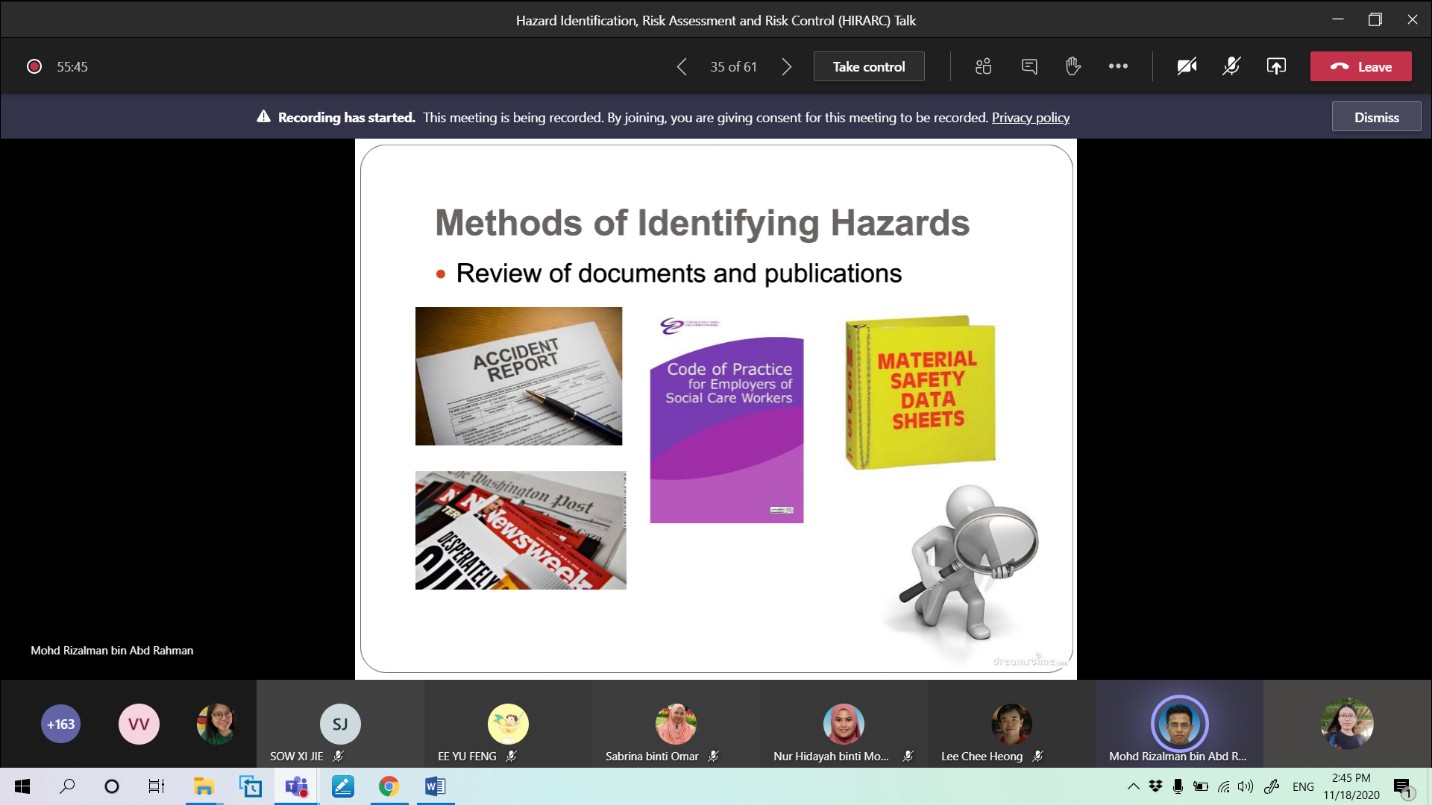Understanding HIRARC
The Occupational Safety and Health Committee (OSHC) of Centre for Foundation Studies (CFS) of Kampar Campus organised a talk titled “Hazard Identification, Risk Assessment and Risk Control (HIRARC)” on 18 November 2020 via MS Teams. The talk was delivered by Mohd Rizalman bin Abd Rahman and was moderated by Lee Chee Heong, an academic in CFS-Kampar Campus.
Rizalman who works as a Senior Assistant Laboratory Manager in the CFS-Kampar Campus, is also the Safety Coordinator in UTAR Occupational Safety and Health Committee. Besides, he also holds the position of Deputy Chairman of CFS-Kampar Occupational Safety and Health Committee.
In his talk, Rizalman began by sharing some pictures of past accidents that happened in workplaces from different parts of the world. Through the pictures shown, he hoped that the participants of the talk could understand that safety is important in order to avoid accidents from happening as the consequences may be costly, with some leading to death.

Rizalman sharing some pictures of accidents happened in workplaces
“To stop accidents, we must eliminate the cause,” advised Rizalman while showing some pictures of areas in the house where hazards may be present, such as a chair that is obstructing the walkway or clothes lying on the floor that may result with someone tripping or falling over if they are not aware of these hazards. “That’s why it is important to assess the hazards and do something to eliminate them in order to prevent accidents from happening,” he advised.
In addition, Rizalman explained that HIRARC has to be done consciously and has to be well planned in the workplace, as stated in the Occupational Safety and Health Act 1994 to secure the safety, health and welfare of not only the persons at work, but also others who have connection with the activities of the persons at work, for instance, residents who live nearby a factory.
Further in his talk, the speaker exposed participants to the purposes of HIRARC, the steps involved in the HIRARC process, methods of identifying hazards and ways to assess risks. The talk ended with an insightful Q & A session.

The first step before hazard identification


The end of the talk by Rizalman (bottom, fourth from the right)

